A history stained with innocent blood: A chronicle of Israel’s massacres in Palestine
People gather around bodies of Palestinians killed after a blast ripped through the Ahli Arab hospital in central Gaza after they were transported to Al-Shifa hospital, on October 17, 2023
Israel's history is replete with events that have raised serious accusations of genocide and ethnic cleansing against the Palestinian population.
1896: Publication of Der Jundenstat (The Jewish State) by Theodore Herzl.
Basel Declaration: calls for the establishment of a home for Jewish in Palestine.
1901: Establishment of Jewish National Fund. Main idea behind it is to fundraising in the purpose of purchasing land.
1914: First World War starts.
1916: Great Arab Revolt.
The revolt was against the Ottoman rule and was initiated by Sharif Hussein in June 1916.
1917: Belfour Declaration.
1919: First Palestinian National Congress in Jerusalem send memoranda to Paris Peace Conference rejecting Balfour Declaration and demanding independence.
1920: Treaty of Sevres.
1920: Founding of Histadrust, a trade union which would organize the economic activities of Jewish workers.
1922:
Churchill White Papers or British White Papers main purpose was to exclude Trans-Jordan from scopes of Balfour Declaration.
The Council of the League of Nations approves the British Mandate for Palestine.
First British Census of Palestine counted 757,182 residents, of whom 83,794 were Jewish.
1933: Adolph Hitler assumes power over Germany.
1936: Beginning of Arab Revolt calling for an end to Jewish immigration and a stop to Jewish ownership of land in Palestine.
1937: Arab Higher Committee rejects the Royal Commission proposal known as Peel Commission.
1938: Palestine Partition Commission (Woodhead Commission) report declares impracticability of Royal Commission's partition proposal.
1939: World War Two starts.
1942: Biltmore Conference.
It recommended an end to British Mandate and called for the founding of Jewish Commonwealth.
1945:
Arab League founded in Cairo.
End of World War Two.
1946:
Bombing of the King David Hotel in Jerusalem.
It was organized by Irgun a Jewish militia.
TransJordan gain independence.
Anglo-American Committee recommended admitting 100,000 Jewish refugees into Palestine.
1947:
UN General Assembly establishes a Special Committee on Palestine - UNSCOP.
UN General Assembly votes to partition Palestine by October 1948, resolution 181.
UN Proposes the division of Palestine into separate Arab and Jewish states allocating 56.6% of Palestine to Jewish state and 43% to Arab state with international enclave around Jerusalem.
1948:
It started with the mass killings and forced displacement of Palestinians in 1948, continuing through over half a century of military occupation, repeated military assaults on Gaza, and official Israeli statements that openly express support for the elimination of Palestinians.
Historical accounts suggest that, during this turbulent period, both Israeli and Yishuv (later Israeli) soldiers were involved in at least 33 massacres and other indiscriminate acts of violence against Palestinians.
Examples include the Sa'sa' Massacre, in which 60 Arabs lost their lives in their own homes, including children, as well as the tragic Husayniyya incident, resulting in the deaths of more than 30 children and women.
A list of major Israeli massacres and killings that occurred after the British decided in February 1947 to terminate their mandate and implement a partition plan for Palestine
Haganah lunches Plan Dalet (March 10).
British House of Commons votes to end mandate on May 15.
US proposed the suspension of Partition Plan.
General Zionist Council decides to establish Jewish independent state in Palestine.
Here is a non-exhaustive list of killings and massacres that took place during the war:
18 December 1947 Al-Khisas massacre Jewish Palmach 10 Arab villagers 10 Arabs dead including five children
30 December 1947 Haifa Oil Refinery massacre Jewish Irgun, Arab workers 6 Arab and 39 Jewish workers 39 Jewish workers killed by Arab workers in the immediate aftermath of an Irgun grenade attack on the Arab workers that had killed 6 and wounded 42
31 December 1947 Balad al-Shaykh massacre, Haifa Jewish Palmach Between 17 and 70 Arab villagers.
3 Jewish forces casualties.
Jewish retaliation for the Haifa Oil Refinery massacre. The raiding unit's orders were to 'kill maximum adult males.'
4 January 1948 Jaffa 'Saraya' building Jewish Lehi 26 Arabs Lehi detonated a truck bomb outside National Committee building, killing 26 and injuring hundreds.
5 January 1948 Semiramis Hotel bombing, Jerusalem Jewish Haganah perhaps Irgun 24-26 civilians Bomb planted which killed 24-26 people, including the Spanish vice-consul, Manuel Allende Salazar.
7 January 1948 Jaffa Gate, Jerusalem Jewish driver 20 Arab civilians Large barrel bomb.
14 Feb 1948 Sa'sa' Massacre, Safed Jewish Palmach 60 Arab villagers 60 Arabs killed inside their houses, including small children; 16 houses were demolished. Considered a model raid by Israeli forces.
22 February 1948 Ben Yehuda Street bombing, Jerusalem British deserters and Arab irregulars 49 to 58 Jewish civilians Killing 49 to 58 Jewish civilians and injuring 140.
Arab High Command took responsibility, imploring the Jewish community to stick to the rules of war.
11 March 1948 Jewish Agency for Israel Arab forces 13 Jewish non-combatants Arabs killed 13 Jews in a bombing
13 & 16 March 1948 al-Husayniyya, Safad Jewish Palmach 30 Arab villagers Over 30, including women and children.
The massacre also caused many to flee the area. The total death toll was put at dozens by Israeli sources
18 March 1948 Acre Arabs 9 British soldiers and Jewish civilians Arabs attacked and killed four Jewish workers for an electric cable company along with five members of a British military convoy who had been escorting them to the city.
9 April 1948 Deir Yassin massacre, Jerusalem Jewish Irgun, Palmach and Lehi fighters.
100 to 120 Arab villagers (including combatants).
4 Jewish combatants.
The villagers resisted the attack.
The attackers fought house-to-house, throwing grenades and shooting.
Villagers were also shot down as they fled from their homes down to alleys and others apparently murdered or executed.
The massacre was condemned by the Haganah and other mainstream Jewish authorities.
The massacre also contributed to increase the 1948 Palestinian expulsion and flight
13 April 1948 Hadassah medical convoy massacre, Jerusalem Arab forces 79 Jewish doctors, nurses, members of Haganah and scientists and 1 British soldier.
Arab retaliation for the Deir Yassin massacre.
2 May 1948 Ein al-Zeitun massacre, Safed Jewish Palmach 30-70 Arab villagers Ein al-Zeitun completely depopulated after the Palmach captured the village.
13 May 1948 Kfar Etzion massacre, Hebron Arab forces 157 Jewish residents and Haganah soldiers
13–19 May 1948 Abu Shusha, Ramle Jewish Givati Brigade 60-70 Arab villagers In 1995, a mass grave near the site with 52 bodies was unearthed.
19 May 1948 1948 Tel Aviv bus station bombing, Tel Aviv Egyptian Air Force 42 100 people were wounded and 42 killed in an attack on a bus station.
11–12 July 1948 Lydda Jewish 3rd Battalion of the IDF 250-1700 civilians By Israeli accounts at least 250 men, women and children were shot on sight by the 3rd Battalion.
Arab sources give a higher estimate at 400–1700.
28 October 1948 Al-Dawayima massacre, Hebron Jewish 89th Commando Battalion, with former Irgun, and Lehi members.
80 to 200 Arab men, women and children.
News of the massacre was suppressed by both Israeli (to prevent UN scrutiny) and Arab forces (in order to prevent morale from collapsing as it did after the Deir Yassin massacre).
29 October 1948 Safsaf massacre, Safed Jewish 7th Armored Brigade.
52-70 Arab villagers killed.
Between 52 and 70 Arab men shot, killed, and burned in a pit. Several women were raped.
30 October 1948 Saliha, Safed Jewish 7th Armoured Brigade 60 - 70 Arab men and women killed after surrendering.
Village completely depopulated.
30 October 1948 Eilabun massacre, Tiberias Jewish Golani Brigade's 12th Battalion 14 Arab villagers killed 13 were executed, 11 from Eilabun (Christians) and 2 refugees (Muslims).
Massacre was documented by the UN.
31 October 1948 Hula massacre, Lebanon Jewish Carmeli Brigade 35 and 58 male Arab villagers.
Hula was captured without resistance.
The commander, first lieutenant Shmuel Lahis, was given seven years in jail for his role in the incident but served only one.
2 November 1948 Arab al-Mawasi massacre, Tiberias Jewish IDF 14 Arab Bedouin men 15 Bedouin men from Khirbat al-Wa'ra al-Sawda' taken near Eilabun and shot.
One survived.
Village was completely obliterated.
Deir Yassin Massacre (April 1948)
The Deir Yassin massacre was a massacre of at least 107 Palestinians.
The victims included scores of children, women, and elders.
The massacre was committed by the Zionist militias groups in Palestine’s Deir Yassin town, near Jerusalem, on 9 April 1948.
The carnage was carried out by Irgun and Stern Gang groups, led by Menachem Begin and Yitzhak Shamir, respectively.
Both Begin and Shamir later became prime minister of Israel.
Some victims were found maimed, raped, and then killed.
Entire families were murdered.
Masses of men were put in trucks to be paraded across Jerusalem before being taken to a quarry to be killed.
The precursor to the Israeli army, the Haganah militia, played a significant role in the attack by providing mortar fire support and assisting in the disposal of the victims' bodies.
Notably, the Haganah was under the control of David Ben-Gurion, who would assume the role of Israel's first prime minister just over a month after the massacre occurred.
This tragic event had far-reaching consequences, as it triggered a mass exodus of Palestinians from their homes and lands, not only in and around Jerusalem but also further afield.
The Deir Yassin massacre marked a pivotal moment in the broader campaign of ethnic cleansing carried out by Zionist militias and the emerging Israeli army.
This campaign aimed to establish Israel as a Jewish-majority state in Palestine, reshaping the demographics and geography of the region.
The Deir Yassin massacre and the resulting feeling of terrified Palestinians across their borders played a crucial role in convincing the leaders of neighbouring Arab countries, who had initially been hesitant to intervene, to take military action.
Ultimately, this led to their involvement in the conflict.
As a consequence of these events, and during Israel's establishment on 78 percent of Palestine, around three-quarters of the Palestinian population were forcibly expelled from their homeland.
This mass displacement significantly shaped the demographics and boundaries of the region and has remained a key aspect of the Israeli-Palestinian conflict.
Abu Shusha Massacre (May 1948)
Abu Shusha was subjected to multiple assaults, culminating in the decisive attack that commenced on 13 May.
Despite the valiant efforts of the village's residents to protect their homes, Abu Shusha fell to occupation on 14 May.
The initial assault was orchestrated by the Givati Brigade, leading to the tragic loss of approximately 60 residents.
In 1995, a mass grave containing 52 skeletons was discovered.
There were reports of a Haganah soldier making two attempts to assault a 20-year-old female prisoner.
The remaining inhabitants of the village were subsequently forcibly displaced on 21 May.
Tantura Massacre (May 1948)
Tantura, a coastal fishing village with a population of around 1,500 people in 1945, was situated near Haifa.
During the 1948 Arab-Israeli War, the village surrendered to Israeli forces.
However, instead of a peaceful transition, Israeli forces launched an assault on the village, resulting in the tragic massacre of nearly 200 Palestinians.
Young men from the village were mercilessly shot and buried in communal graves.
In a subsequent investigation of this atrocity in the now-destroyed Palestinian village, three possible mass graves have been identified beneath a beach resort.
End of the British Mandate for Palestine.
Declaration of the establishment of the State of Israel.
May 1948. Abd al-Qadir al-Husseini forms Jaysh al-Jihad al-Mudaddas (Army of the Sacred Jihad).
Arab Liberation Army (Jaysh al Inqadh al-Arabi) under the command of Fawzi a-Qawuji entered Palestine.
Armies of Egypt, Iraq, Lebanon, Transjordan and Syria participated in the war.
Altalena Affairs.
Lydda Massacre (July 1948)
Lydda and Ramle, two towns originally designated to be part of an Arab state in Palestine as per the UN Partition Plan of 1947, ultimately came under Israeli control.
The Israeli assault on Lydda began on July 11, 1948.
The city's defenders initially put up a fierce resistance but eventually depleted their ammunition.
Israeli forces entered the city in the evening, and upon gaining entry, they carried out indiscriminate violence, opening fire on anyone attempting to escape.
By 12 July, the Israelis had secured complete control of the city, even though it had not formally surrendered.
They ordered male residents to gather in mosques and churches, imposing a curfew.
Heartbreakingly, both the Great Mosque and the Dahmash Mosque, where hundreds had sought shelter, became harrowing scenes of violence.
While estimates of the death toll vary, it is believed that over 400 Lydda residents lost their lives.
Unfortunately, the tragedy did not conclude with the massacre.
Israel made the decision to forcibly remove all residents from the city.
In a callous response to the plight of the residents of Lydda and Ramle, David Ben-Gurion's directive was straightforward: "Expel them."
On 13 July, Israeli forces compelled the residents to depart, subjecting them to a perilous journey towards Ramallah.
Tragically, many succumbed to thirst, dehydration, and exhaustion during the harrowing journey.
Saliha Massacre (October 1948)
Saliha marked the first village where a massacre was perpetrated by the 7th Brigade of the Israeli forces.
Upon their entry into the village, they detonated a mosque and tragically took the lives of 60 to 94 individuals who had sought refuge inside.
Al-Dawayima Massacre (October, 1948)
The massacre in the village of al-Dawayima is regarded as one of the major atrocities of the 1948 war, and arguably one of the most horrific.
What sets it apart from other massacres carried out by Zionist paramilitary groups is that the perpetrators were regular Israeli armed forces with operational planning capacity.
Al-Dawayima was one of the largest villages in the Hebron area, and the subsequent massacre unfolded in three distinct stages: first in homes and alleyways, followed by the village mosque, and ultimately within a cave.
On 29 October, the Israeli military initiated the assault on the village.
The soldiers deployed tanks, artillery, and machine guns, launching a simultaneous attack on the village from three different directions, subjecting it to intense firepower.
The defenders of the village, numbering no more than 20 armed men, attempted to resist but were swiftly overwhelmed by the Israeli forces.
By midday, the Israeli forces had entered the village, encountering minimal resistance. Firing began at a distance of half a kilometer as the semi-circular arc of forces closed in.
The Israeli troops fired indiscriminately for over an hour, during which time many villagers fled.
Two groups of residents sought refuge, one in the mosque and the other in a nearby cave known as Iraq Al-Zagh, but the Israeli forces hunted them down and tragically shot them dead.
In the mosque, 60 bodies were discovered, primarily those of elderly men, while numerous corpses of men, women, and children lay strewn across the streets.
Additionally, the entrance to the Iraq Al-Zagh cavern held the bodies of 80 men, women, and children.
Upon conducting a census, it was revealed that a total of 455 individuals lost their lives, consisting of 280 men and the rest women and children.
Bernadotte Plan proposes new partition of Palestine.
Plan was rejected by both Arab League and Israel.
UN General Assembly establishes Palestine Conciliation Commission.
Palestinians refugees displacement.
David Ben-Gurion becomes the first Israeli prime minister.
1949:
Arab Israeli War of 1948 or Israeli War of Independence ends.
Admission of Israel to membership in the United Nations, resolution 273.
Qibya Massacre (October 1953)
A force of 250 to 300 Israeli soldiers, under the leadership of Ariel Sharon, launched an assault on the village of Qibya in the West Bank, which was under Jordan's control at the time.
This tragic event resulted in the loss of Palestinian civilian lives. Israeli forces used explosives to demolish dozens of buildings throughout the village, leading to the massacre of over 69 Palestinian villagers, with approximately two-thirds of the victims being women and children.
The devastating attack also resulted in the destruction of 45 houses, a school, and a mosque.
Kafr Qasim Massacre (October 1956)
The massacre took place on the day the Tripartite Aggression was launched against Egypt, although the incident's location was considerably distant from the battlefront in the Gaza Strip and Sinai Peninsula.
Border policemen, acting on orders from Israeli military commanders, carried out the killings.
On 29 October 1956, the Israeli government and military decided to enforce a curfew on the Arab villages near the border with Jordan.
At 4:30pm on that day, a border police sergeant informed the mayor of Kafr Qasim that a curfew would be in effect starting at 5pm that evening.
This presented a significant challenge as hundreds of villagers who had left their homes in the morning for work had no way of being aware of the curfew until they returned home.
Soldiers were instructed that they should "shoot to kill at any person seen outside their home after 17:00, making no distinction between men, women, and children."
When the villagers returned to their homes after 5 pm, border police halted them on the western side of the village.
Soldiers required them to disembark from their vehicles, cars, or bicycles and began firing at them from close range.
In just one hour, they ruthlessly killed 49 residents of Kafr Qasim, including children.
Khan Yunis Massacre (November 1956)
The Khan Yunis massacre was perpetrated by Israeli forces in the Palestinian town of Khan Yunis and its adjacent refugee camp in the Gaza Strip during the Suez Crisis.
This tragic event unfolded as part of an Israeli operation aimed at reopening the Egyptian-blockaded Straits of Tiran.
During the operation, Israeli soldiers conducted a brutal house-to-house search for fedayeen, resulting in the tragic shooting of approximately two hundred Palestinians in Khan Yunis and Rafah.
This ruthless action led to the estimated loss of 275 to 400 Palestinian lives.
The curfew imposed by Israel on the citizens of Gaza tragically hindered their efforts to retrieve the bodies of their fellow villagers.
However, due to international pressure, Israel withdrew from Gaza and the Sinai in March 1957.
Shortly after the withdrawal, a mass grave was uncovered in the vicinity of Khan Yunis, revealing the remains of 40 Palestinian men who had been bound and fatally shot in the back of the head.
Sabra and Shatila Massacres (September 1982)
The massacres unfolded within the context of the Israeli invasion of Lebanon in September 1982.
Sabra and Shatila massacre that took place starting on September 16 1982, after the Israeli occupation army, led back then by Ariel Sharon, surrounded the refugee camp after invading Beirut, and granted access to the Phalanges to enter the camp to slaughter its refugees. The massacre lasted for three days (16, 17 and 18 of September 1982), approximately 3500-8000 persons, including children, infants, women and elderly were slaughtered and murdered in his horrific and gruesome massacre perpetrated by the Israeli army and its allied criminal militia.
Back then, around 20.000 refugees lived in the refugee camp that was supposed, as any other camp, to receive international protection.
Israeli soldiers, led by Sharon and Chief of Staff, Rafael Etan, made sure their forces are surrounding the refugee camp, isolated it from its surrounding, and allowed the Phalanges to invade it and murder thousands of innocent refugees using white weapons.
The Israeli army also fired hundreds of flares during the massacres in night hours to enable the murderers to commit their war crime. The army claimed that it was searching for nearly 1500 Palestinian freedom fighters who allegedly were in the camp.
But the fighters were somewhere else, joining battle fronts countering the Israeli aggression, and most of those left in the camp, left to face their horrific end, were elderly women and children.
Israel wanted to avenge its defeat after engaging in a three-month battle and siege that ended by international guarantees, to protect the civilians the Palestinian resistance left Beirut as part of an agreement that assured the protection of civilians.
Israel wanted to send a message to the Palestinian refugees; it wanted to continue its aggression and invasion into Lebanon in 1982.
Ariel Sharon, who served as Israel’s Defense Minister, led the assault.
Following the massacre, Israel’s Supreme Court ordered the formation of a committee to investigate the circumstances that led to this ugly crime against thousands of helpless refugees.
In 1983, the Cahan Commission announced the results of what it called “investigation” of the massacre, and decided that Sharon is “indirectly responsible” as he ignored the possibility of it taking place, ignored the danger of bloodshed and revenge.
Sharon continued his political career, to become Prime Minister and held various important positions until he suffered stroke on January 4 2006, and has been in a been in a permanent vegetative state since then.
Israeli forces had surrounded the Palestinian refugee camps of Sabra and Shatila in West Beirut.
The Israeli military authorized the entry of the right-wing Christian Phalangist militia, which was aligned with Israel, into the camps.
During a grim two-day span, from 16 to 18 September, the Phalangists executed a brutal operation that resulted in the loss of a substantial number of Palestinian refugees and Lebanese civilians, with nearly 3,000 lives tragically taken.
This massacre triggered international outrage and stirred criticism within Israel.
The Kahan Commission determined that Israeli authorities bore indirect responsibility for the massacre, resulting in the resignation of Israeli Defence Minister Ariel Sharon.
Al-Aqsa Massacre (October 1990)
The Al-Aqsa Massacre, also known as Black Monday, took place in the Al-Aqsa compound in occupied Jerusalem in October 1990, during the third year of the First Intifada.
This tragic event was instigated by Israel's decision to lay the cornerstone for the presumed Israeli Temple, which subsequently led to widespread riots.
In the ensuing confrontations, Israeli security forces were responsible for the deaths of 17 Palestinians, and more than 150 Palestinians suffered injuries.
The Ibrahimi Mosque Massacre (February 1994)
The Ibrahimi Mosque Massacre, which occurred in February 1994, is also referred to as the Cave of the Patriarchs massacre or the Hebron massacre.
It was carried out by Baruch Goldstein, an American-Israeli physician and an extremist associated with the Zionist Kach movement.
During the holy month of Ramadan, Goldstein opened fire with an assault rifle on a large congregation of Palestinian Muslims who were in prayer at the Ibrahimi Mosque in Hebron.
This horrifying act resulted in the deaths of 29 people, including some as young as 12 years old, and left 125 others wounded.
This heinous event immediately triggered widespread protests by Palestinians throughout the West Bank.
And during the subsequent clashes, an additional 20 to 26 Palestinians lost their lives at the hands of the Israeli occupation forces.
Jenin Refugee Camp (April 2002)
During the Second Intifada, Israeli forces launched a military operation in the Jenin Refugee Camp situated in the West Bank.
Israel deployed infantry, commando forces, assault helicopters, tanks, and bulldozers, resulting in the tragic loss of at least 54 Palestinian lives.
Multiple Israeli attacks in Gaza have led to significant Palestinian casualties:
2008-09: The Gaza Massacre commenced when Israel initiated a large-scale military campaign in the Gaza Strip on 27 December 2008.
This action followed the expiration of a fragile six-month truce between Hamas and Israel on 19 December.
The Israeli attack commenced with a severe bombardment, targeting civilian infrastructure, which included mosques, residences, medical facilities, and schools.
Israeli forces repeatedly deployed white phosphorus munitions in the air over populated areas.
On 3 January 2009, the Israeli ground invasion was launched, resulting in the estimated deaths of 1,166 to 1,417 Palestinians.
In November, Israel's assault on Gaza escalated with the assassination of Ahmad Jabari, the deputy commander-in-chief of Ezzeddin Al-Qassam Brigades, and another member, Mohamed Al-Hams.
Israeli attacks intensified, murdering 165 Palestinians, including 42 children, and injuring 1,220 Palestinians, including 430 children.
The immediate trigger for the conflict was the abduction of three Israelis in the West Bank, which was followed by Israeli retaliatory attacks against Palestinians in East Jerusalem, thereby escalating tensions with Gaza.
Israel initiated the hostilities with a series of air strikes.
This marked the third major military confrontation between Israel and Hamas since Hamas assumed control of the Gaza Strip in 2007.
Israel then launched a ground invasion into Gaza, resulting in the loss of 2,205 Palestinian lives.
2018-2019: The Gaza border protests, also referred to as the Great March of Return, encompassed a series of peaceful demonstrations that occurred every Friday along the Gaza-Israel border, starting on 30 March 2018, and continuing until 27 December 2019.
The demonstrators' key demands included the right for Palestinian refugees to return to the lands from which they had been displaced by Israel.
Additionally, they protested against Israel's land, air, and sea blockade of the Gaza Strip.
2021: The crisis initially began with the impending eviction of six Palestinian families from the Sheikh Jarrah neighborhood in occupied Jerusalem, which led to protests by Palestinians in East Jerusalem.
The situation escalated on 7 May when Israeli police forcefully entered the Al-Aqsa Mosque compound, employing tear gas, rubber bullets, and stun grenades, resulting in over 600 reported injuries.
In response, Hamas fired a multitude of rockets towards Israel, prompting Israel to carry out hundreds of air strikes.
These air strikes resulted in the tragic loss of 260 Palestinian lives, with half of the casualties being children and women.
Additionally, 1,948 individuals sustained injuries, including 610 children and 400 women.
On 7 October 2023, an armed conflict broke out between Israel and Hamas-led Palestinian fighters from the Gaza Strip after the latter launched a multi-pronged invasion of southern Israel.
After clearing Hamas fighters, the Israeli military retaliated by conducting an extensive aerial bombardment campaign on Gazan targets, followed by a large-scale ground invasion of Gaza.
More than 1,200 Israelis, mostly civilians, and more than 14,000 Palestinians, mostly women and children, have been killed in the fighting.
UN General Secretary António Guterres stated that Gaza is "becoming a graveyard for children".
The current hostilities constitute the fifth war of the Gaza–Israel conflict, which is part of the broader Israeli–Palestinian conflict.
In the morning of 7 October, Palestinian fighters groups launched a barrage of rockets against Israel.
While around 3,000 militants breached the Gaza–Israel barrier and attacked Israeli military bases and civilian population centers.
as well as a music festival near Re'im has been shoot with rocket to accuse Hamas but at the end it was clear internationally that Israel who did it .
Between the attack and Israel's counterattack, more than 200 Israeli soldiers and more than 800 armed settlers were killed, alongside an estimated 100 Palestinian fighters.
Over 300 Israeli civilians and soldiers, as well as some foreign nationals, were also taken captive to the Gaza Strip.
Hamas said its attack was in response to the blockade of the Gaza Strip, the expansion of illegal Israeli settlements, rising Israeli settler violence with machine guns.
Arrest innocent civilians and underage in an open air prison, barbarian army sexual assault on females at all ages, and the recent barbarian escalations at Al-Aqsa.
Israel's declaration of a state of war the following day marked the start of the most significant military escalation in the region since the Yom Kippur War in 1973
It's lengthy aerial bombardment of Gaza dropped 8,980 bombs and hellfire rockets from the first six days of the conflict.
The airstrikes were coordinated with a total blockade of the Gaza strip in addition to cutting off telecommunications, water, fuel, food, medicine and electricity.
Israel urged 1.5 million Gazans to evacuate northern Gaza, while Hamas called on residents to stay in their homes.
But when the people tried to flee from the bombs and rockets that getting drop on their head the barbarian mercenary Israeli army hunted them down and killed more than 3000 until now
After they chased civilians through the streets, destroyed homes and on the roads
They bombed refugee camps protected by international laws, the United Nations Charter, and the Geneva Convention
On 27 October, Israel launched a ground invasion of the Gaza Strip, which remains ongoing.
The barbaric mercenary army killed the elderly men, women and infants and hung slogans and wear a t-shirts : “Kill a pregnant Palestinian woman, you will win and rewarded twice.”
They also attacked the Baptist Hospital live on air after bombing it with internationally banned white phosphorus and tried to pin the blame on Hamas fighters, but their lies and falsification of the facts were revealed and it became clear that Israel was the one who committed this war crime.
Widespread civilian deaths have led to Israel is being accused of full war crimes against humanity and violates the international law.
Starvation, Thirst, Stopping Burning bombs, 5-ton bombs, phosphorus prohibited bombs, and missiles containing cluster bombs were thrown at homes, camps containing unarmed civilians women and children.
And hospitals were attacked with armored vehicles and tanks in full view of all international institutions, the United Nations, the Security Council, and even the International Court of Justice and the War Crimes Court.
The United Nations reported that around 1.5 million Palestinians, over 70% of Gaza's population, as well as over 200,000 Israelis have been internally displaced.
There are acute shortages of everything drinking water, food and fuel in Gaza.
The health system is failing; most hospitals are out of service, and doctors are performing C-sections and amputations without anesthetic.
The war has led to widespread global protests that have focused on a variety of issues including demands for a ceasefire, and the release of hostages.
IBSM (Israeli Barbarian Savages Mercenaries) soldiers preparing for a ground operation in Gaza on 29 October
IBSM (Israeli Barbarian Savages Mercenaries)tanks on operations in the Gaza Strip completely destroys infrastructure, streets, and bombing water and fuel tanks and even bakeries on 31 October
The United States vetoed a United Nations Security Council resolution calling for an immediate humanitarian ceasefire; a week later, a non-binding advisory resolution passed overwhelmingly in the United Nations General Assembly.
Israel has rejected ceasefire calls, asserting it will not stop until all hostages taken by Hamas are returned.
Hamas announced that it is ready to release all Israeli hostages in exchange for the release of all Palestinian prisoners.






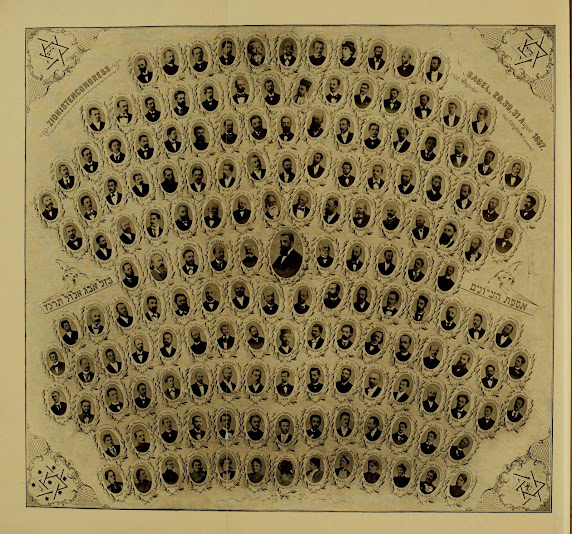











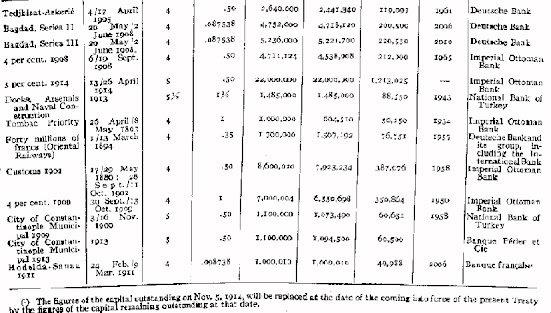








.png)
.jpg)


.jpeg)
.jpg)


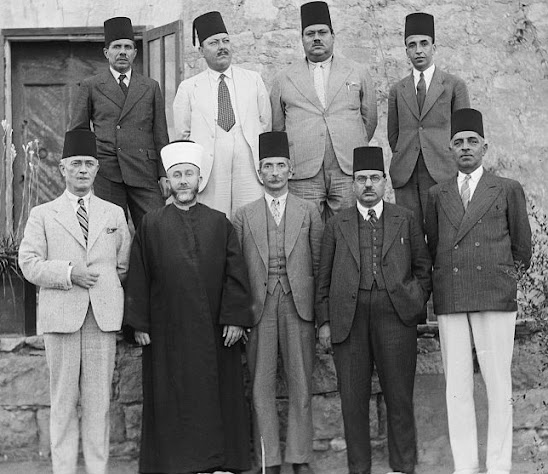







.jpg)









.jpg)
.jpg)
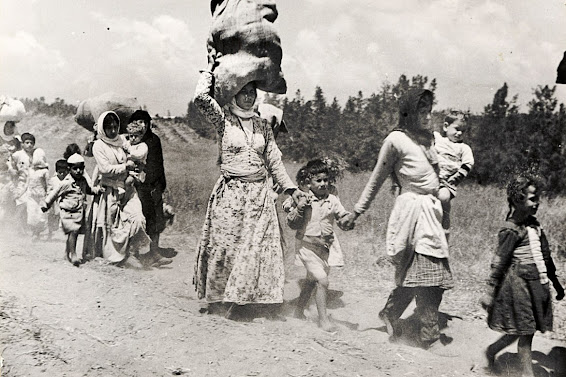
.jpg)

.jpg)
.jpg)

.jpg)




.jpg)








.jpg)
.jpg)





















.jpg)







.jpg)









.jpg)













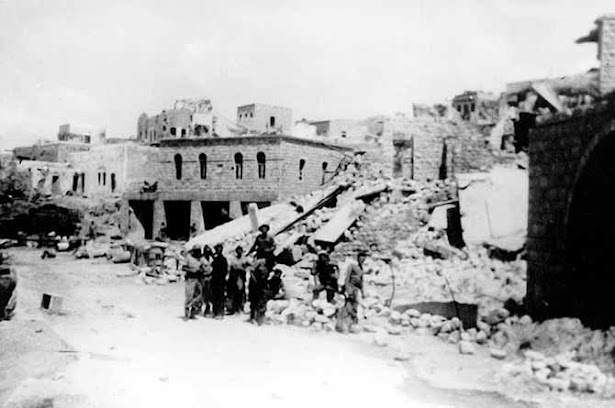


.jpg)














.jpg)


.jpg)






.jpg)

.jpg)



.jpg)




.jpg)
.jpg)






.jpg)

.jpg)


.jpg)



.jpg)





.jpg)






.jpg)






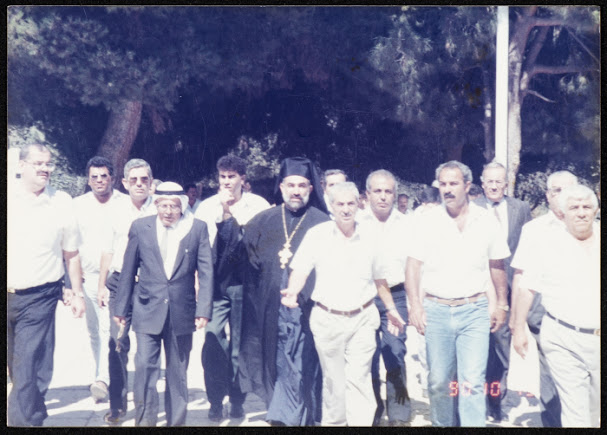


.jpg)






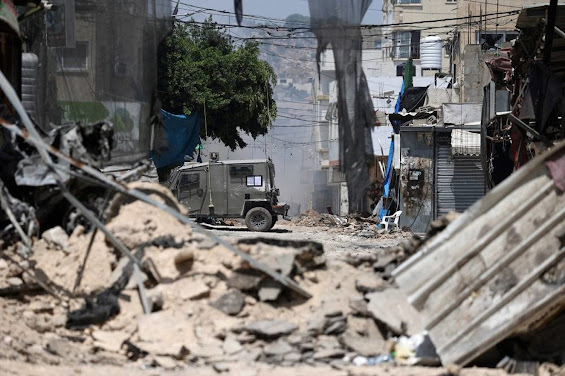










.jpg)




















.jpg)







































.jpg)


.jpg)
.jpg)
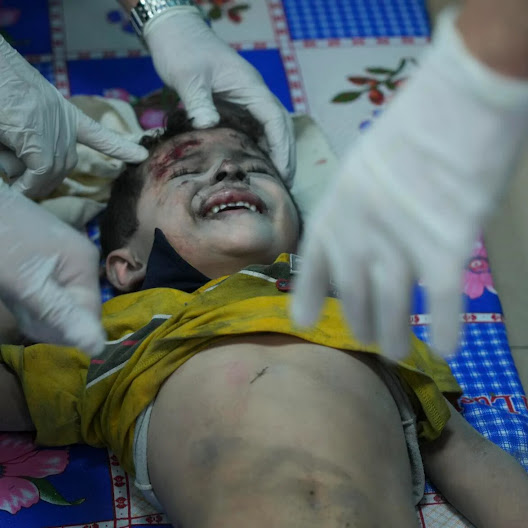


No comments:
Post a Comment
Note: Only a member of this blog may post a comment.